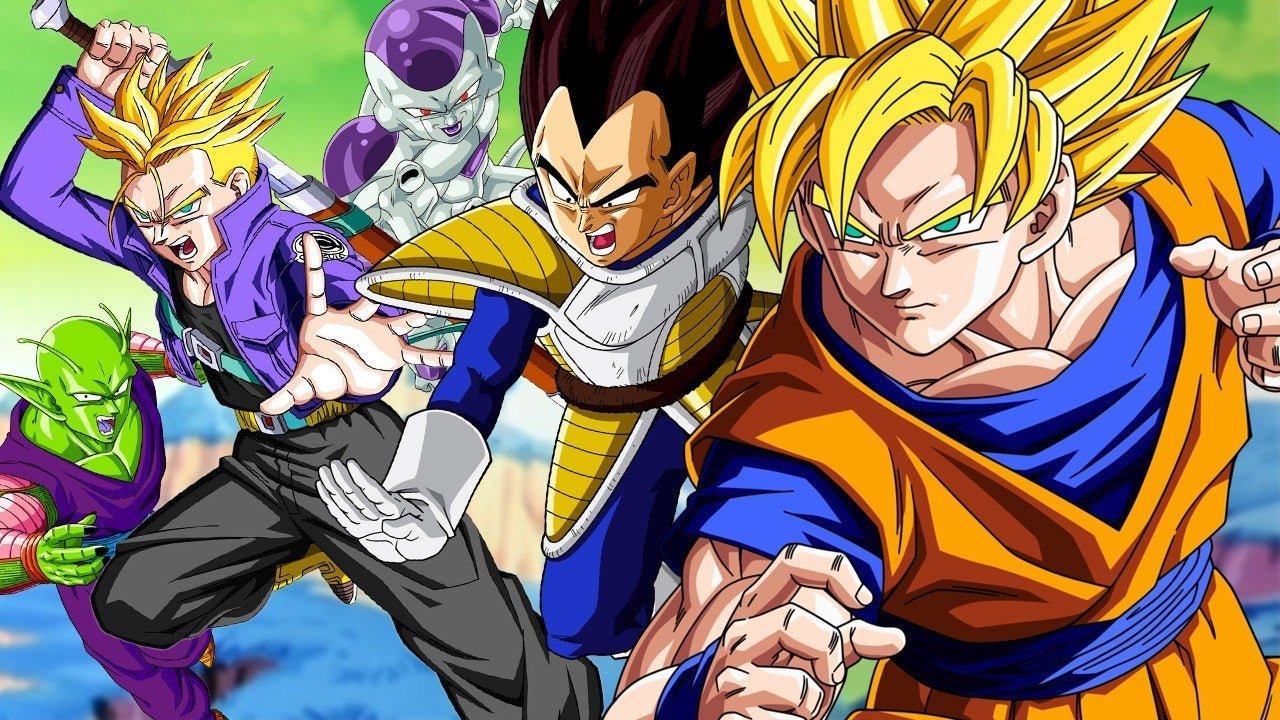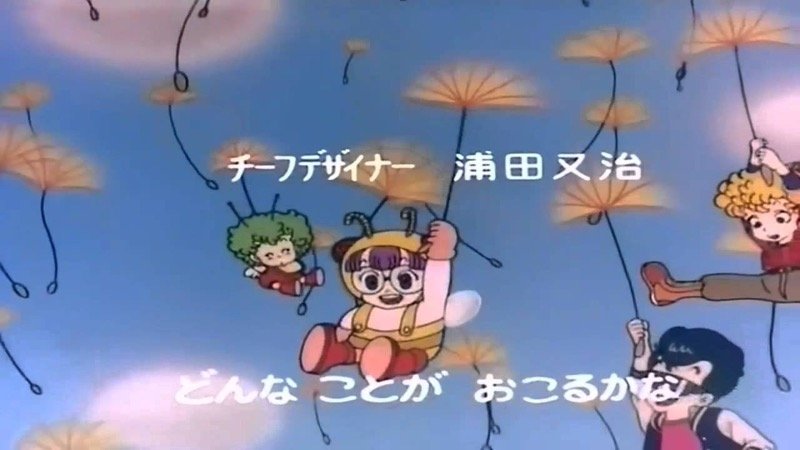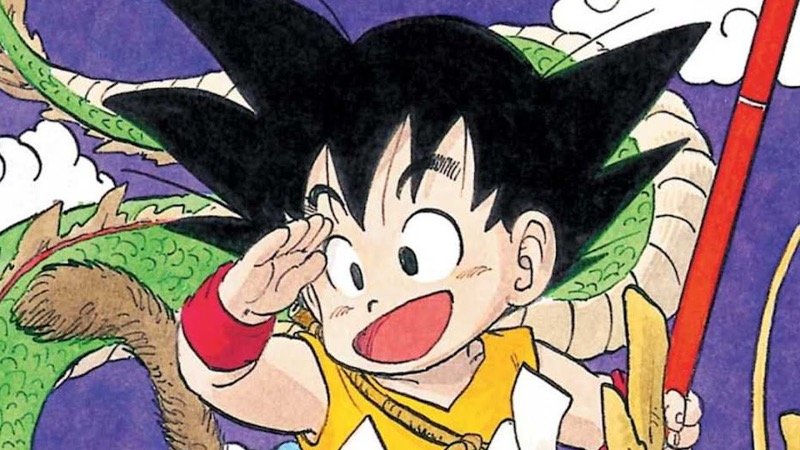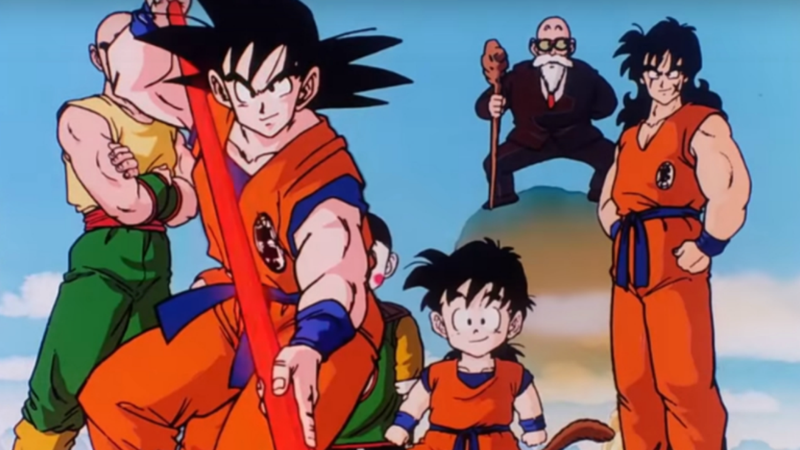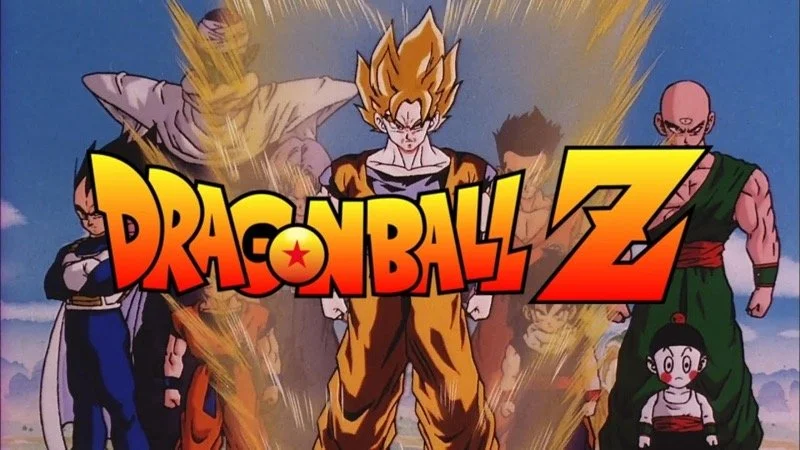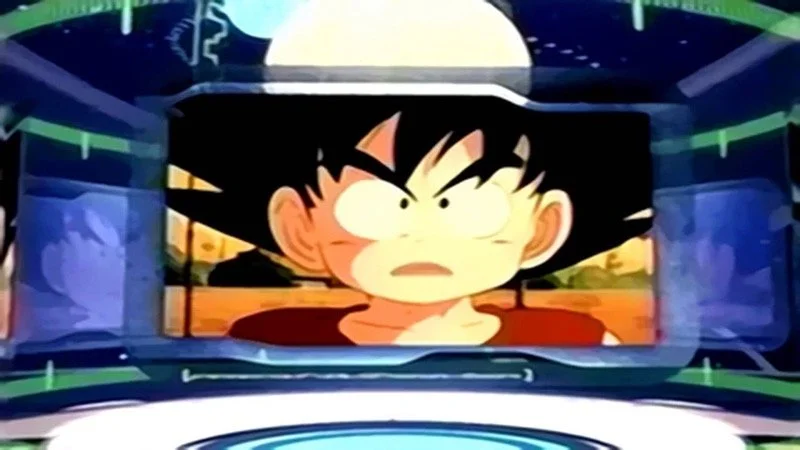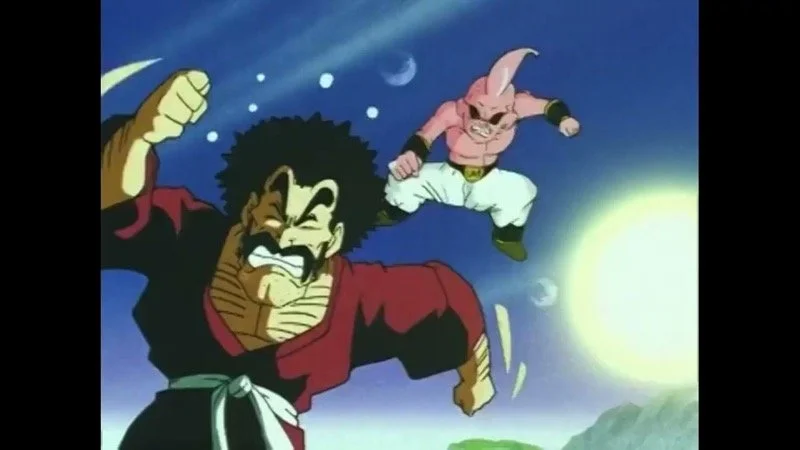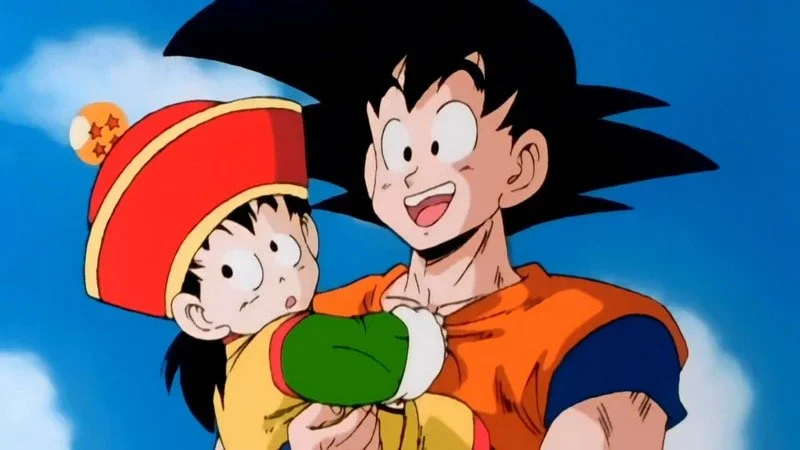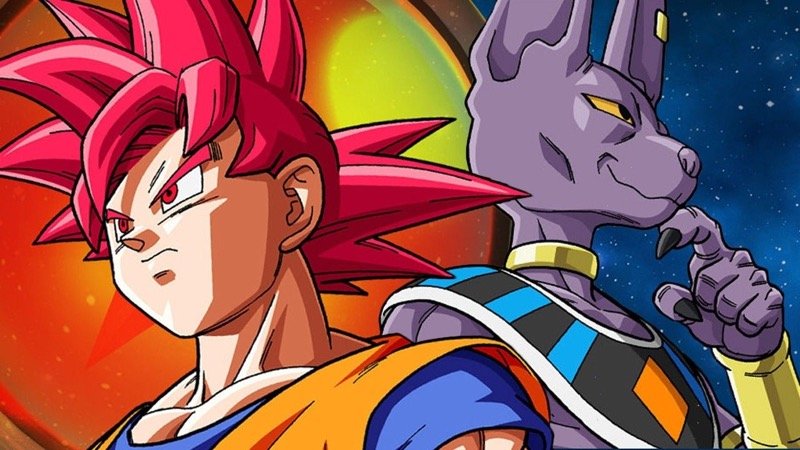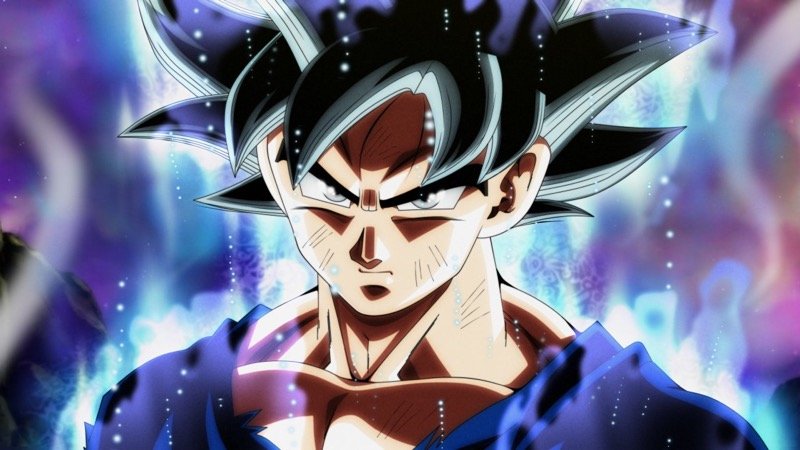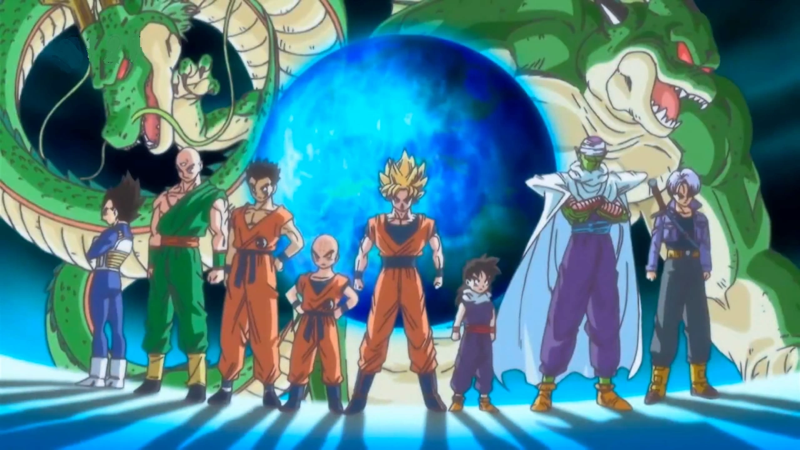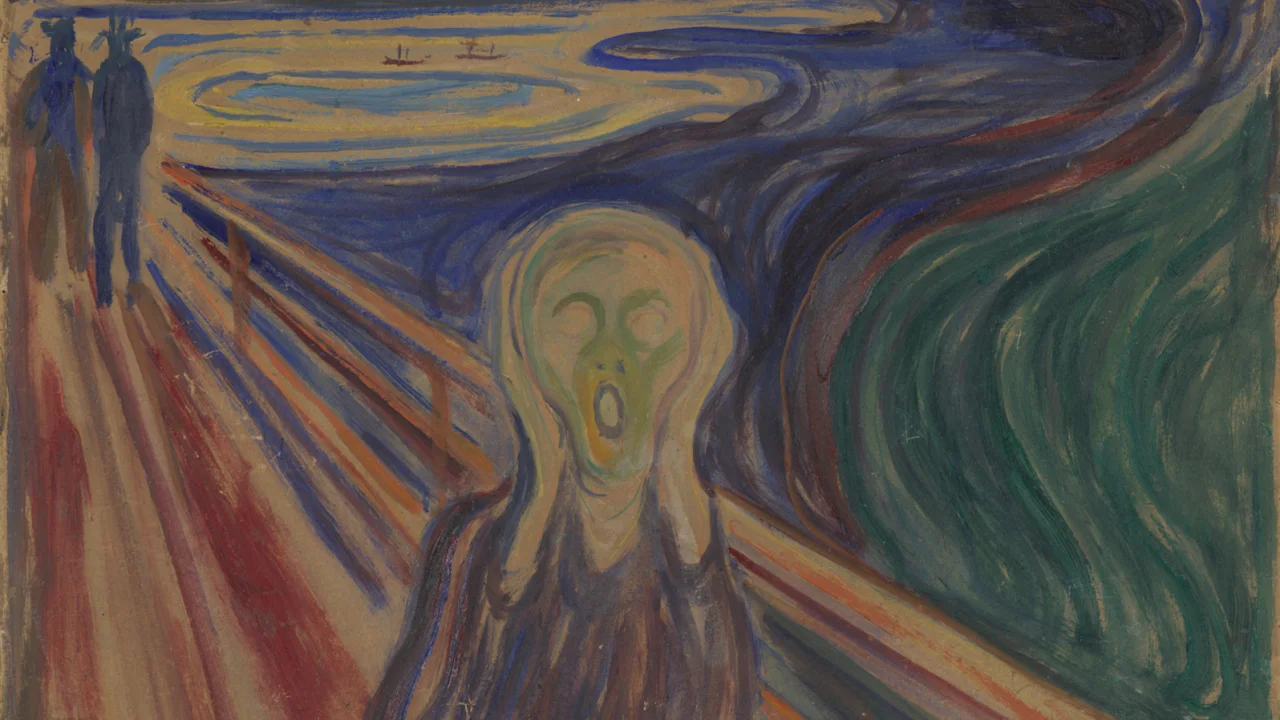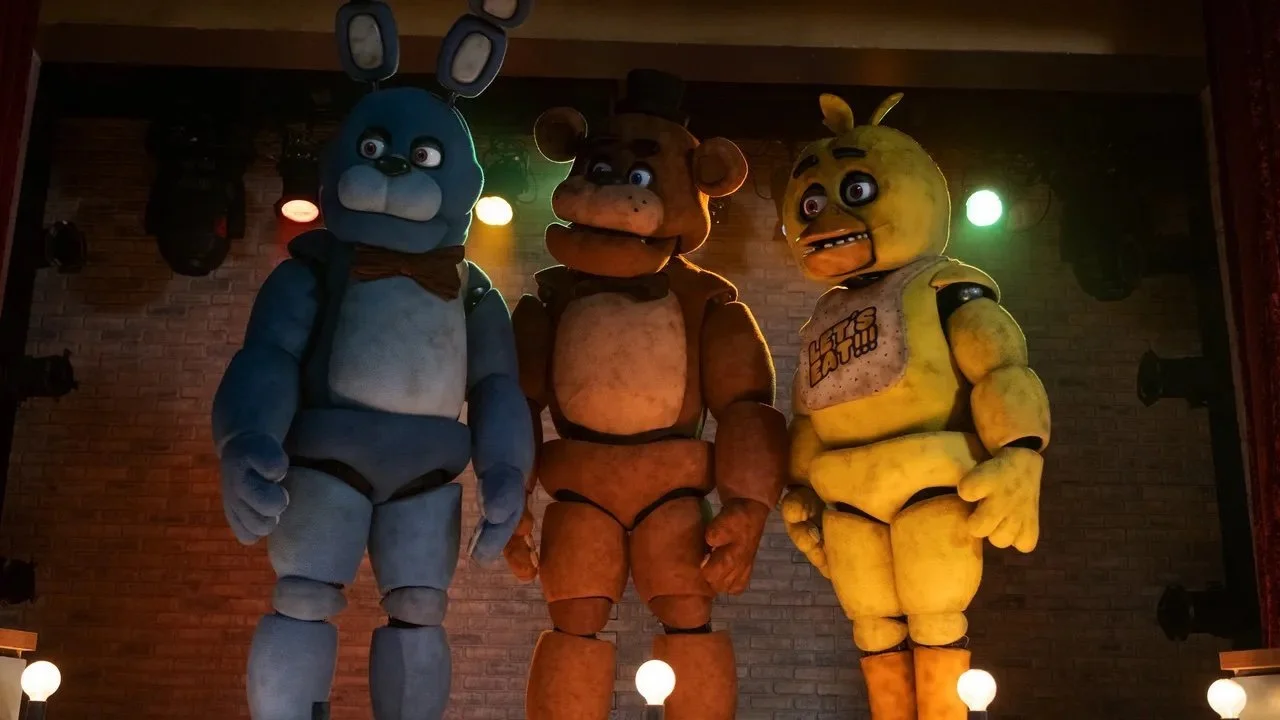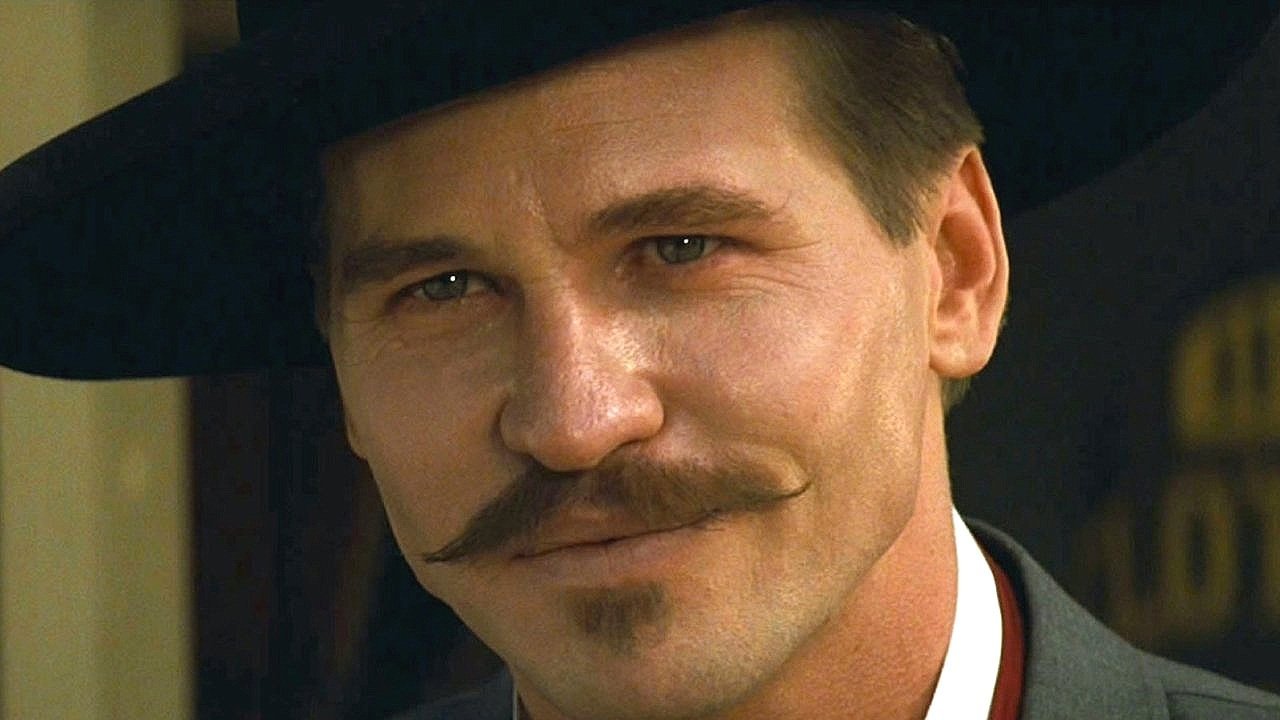The History Of The ‘Dragon Ball’ Series
Image Source: IGN Africa
The Dragon Ball franchise has been immensely popular since it first graced the pages of Weekly Shonen Jump in 1984. Created by Akira Toriyama, this fighting manga turned media franchise has captured the imagination of people around the world, but how did this "Mystical Adventure" begin? Hop on your kinto'un (nimbus cloud) and gather up your energy as we go through the history of Dragon Ball!
Toriyama's Manga Before ‘Dragon Ball’
Akira Toriyama was born in Nagoya, Aichi, Japan, on April 5, 1955. As a child, he and several of his friends used to draw pictures imitating anime and manga, and he began to advance his craft by drawing pictures of his classmates. Toriyama's first published manga was Wonder Island, which was published in Weekly Shonen Jump in 1978, but it was not popular with readers. His first success was the comedy manga Dr. Slump, which follows the adventures of Dr. Senbei Norimaki and his robot daughter Arale.
RELATED:
Image Source: YouTube
The manga ran in Weekly Shonen Jump from 1980-1984, and it earned the mangaka the Shogakukan Manga Award for best shonen or shojo series of the year in 1981. It was also given an anime adaptation that same year on Fuji TV. Though popular, Toriyama wanted to end it within six months of its creation. Shueshia, the publisher of Weekly Shonen Jump, would only let him do so if he agreed to start another serial manga shortly after. He tried with several one-shots, but none of them were as successful as Dr. Slump. However, his editor, Kazuhiko Torishima, had an idea.
Image Source: The Lost Media Wiki
The Beginning Of ‘Dragon Ball’
Knowing Toriyama's affinity for kung-fu movies, Torishima suggested that the artist create a kung-fu-based manga. He created two manga called Dragon Boy and The Adventures of Tongpoo that acted as the prototypes for Dragon Ball. The first chapter of the Dragon Ball manga appeared in the December 3rd, 1984 issue of Weekly Shonen Jump. The story was initially a loose adaptation of the Chinese fable Journey to the West. The Monkey King Sun Wukong became the monkey-tailed boy Son Gokū, Tang Sanzang the wise monk became Bulma, Zhu Bajie "Pigsy" and Sha Wujing "Sandy" became Yamcha and Oolong, and the Bull Demon King and Princess Iron Fan became Gyumao (or "Ox King" in the English dub) and Gokū's future wife Chi-Chi. Instead of searching for the Buddhist sutras, Gokū and Bulma searched for the seven Dragon Balls. When all seven are gathered, the dragon Shen Long (or "Shenron" in the English dub) will grant one wish. This was the plot of the manga's first arc along with parodies of the typical battle manga tropes. The manga was not initially popular, with Toriyama focusing more on the adventure aspects of the story instead of the combat. However, Toriyama eventually gave in and added more battles starting with the Tenkaichi Budōkai arc, and it was around this time that the series began to pick up in popularity.
The manga was adapted into an anime in 1986 on Fuji TV. Bringing the characters to life were Masako Nozawa as Son Gokū, the late Hiromi Tsuru as Bulma, Mayumi Tanaka as Kuririn (Gokū's training buddy), Naoki Tatsuta as Oolong, and Toru Furuya as Yamcha, among several others. There was a dramatic tone difference around this time, as the arc in the manga at the time, the Piccolo Daimao arc, began with the first major character death: The death of Gokū's friend and training partner Kuririn (or Krillin). Both of them trained under Kame Sen'nin (or Master Roshi), and it was an emotional moment for the boy. This change in tone continued, and by the time it reached the 21st Tenkaichi Budōkai arc, it was almost a completely different series. For the anime, this drastic shift in tone did constitute a new series, with Dragon Ball Z premiering in 1989 in the former anime's timeslot.
Image Source: Cinema Blend
The ‘Dragon Ball Z’ Era
Though the manga was still called Dragon Ball until its last chapter in 1995, the anime switched to the title Dragon Ball Z when it began to adapt the last 325 chapters of the manga. Gokū is now all grown up and is married to Chi-Chi. The two of them have a child named Son Gohan, and the anime focuses on both Gohan and Gokū initially. Several things were introduced in this era, such as Gokū being part of an alien race called the Saiyans, Piccolo being revealed to be part of the Namekian race, and a whole lot of new villains (one of which, Vegeta, ends up becoming an anti-hero who fights alongside Gokū and later marries Bulma). Each arc of this period is divided into arcs named after the main villain or villainous force that Gokū and Co are up against. These arcs are the Saiyan arc, the Freeza arc, the Cell arc, and the Buu arc. It was during this period that the manga and anime were immensely popular, even though Toriyama wanted to end the series several times at this point. The manga ended on May 20th, 1995, while the anime ended on January 31st, 1996. A sequel anime, titled Dragon Ball GT, aired from 1996-1997 with minimal involvement from Toriyama.
The 'Dragon Ball' "Mystical Adventure" To America
The popularity of Dragon Ball led both anime series to be exported to several countries, and in most territories in which it was broadcast, it was a huge hit. The only country that it had an issue gaining a foothold in was America. The first real attempt to bring Dragon Ball to the States was when Harmony Gold USA licensed the series for broadcast in that territory in 1989. In its dub, pretty much every character's name was changed, with Gokū becoming Zero, Bulma being changed to Lena, Yamcha becoming Zedaki, Oolong becoming Mao Mao, Puar becoming Squeaker, and Kuririn becoming Bongo. Other than this, the dub was sort of, kind of, close to the Japanese original, with it at least keeping the original music. Harmony Gold only dubbed the first five episodes of the anime and the movies Dragon Ball: The Legend of Shenlong (or Dragon Ball: Curse of the Blood Rubies) and Dragon Ball: Mystical Adventure, with the latter two being edited into an 80-minute special. The voice cast consisted of some rather prolific actors including Barbra Goodson (known for voicing Rita Repulsa in Mighty Morphin Power Rangers) voicing Zero/Gokū, Wendee Lee (known for voicing Faye Valentine in Cowboy Bebop) as Lena/Bulma (Lee would later reprise her role in the Bang Zoom dub of Dragon Ball Super), and Cheryl Chase (known for Angelica Pickles in Rugrats) as Squeaker/Puar. This dub was test-marketed on several independent stations but failed to gain an audience. It was also never released on home video. Thus, Dragon Ball would continue to not have a presence in the USA.
Image Source: Cartoon Dubbing Wiki
Fast forward to 1995, and a new company called Funimation (now Crunchyroll) has acquired the rights to Dragon Ball. Funimation, in cooperation with BLT Productions, then produced a dub of the first 13 episodes of the series. At first, they planned to use the same name changes from the Harmony Gold dub, but thankfully, they decided against it. The dub was surprisingly close to the original Japanese script, but it still had several changes, mostly for content. However, rather than using the Japanese score, they decided to create an original score, which was composed by Peter Berring and Griffiths, Gibson, and Ramsay Productions. The dub itself was recorded at Dick & Roger's Sound Studio in Vancouver, Canada, using a variety of freelance talent that would later appear in Funimation's first dub of Dragon Ball Z. Among the voice cast are Saffron Henderson as Son Gokū, Lalaina Lindberg as Bulma, Alec Willows as Oolong, Michael Donovan as Master Roshi, Ted Cole as Yamcha, Kathy Morse as Chi-Chi, Dave Ward as Ox-King, and Andrea Libman as Chi-Chi. The dub aired in first-run syndication but was soon canceled due to low ratings. Funimation instead decided to focus on the more action-packed Dragon Ball Z.
Image Source: YouTube
Funimation teamed up with Saban (known for Digimon and Power Rangers) and Ocean Group for Dragon Ball Z, with Saban handling distribution and music and Ocean handling voice recording and casting. This version is known for its variety of edits from the Home For Infinite Losers and characters going to the "next dimension." It is also this version that spawned the "It's Over 9,000" meme. The Funimation/Saban dub condensed the first 67 episodes into 53 episodes for its two seasons, and its cast featured Ian James Corlett as Son Gokū and Master Roshi, Saffron Henderson as Son Gohan, Terry Klassen as Kuririn/Krillin, Scott McNeil as Piccolo, and Brian Drummond as Vegeta, among several others. Ian James Corlett would later leave midway through the show's second season, citing payment issues, and Peter Kelamis came in to replace him for the remainder of the dub.
The show's music was composed by Ron Wasserman of Power Rangers fame. Though the series was successful in syndication, Saban decided to part ways with Funimation due to wanting to focus on original programming for its Fox Kids block. Thus, Dragon Ball Z left the American airwaves. Funimation did team up with Pioneer to release dubs of the first three Dragon Ball Z movies using the same Canadian cast from mid-season two of the show, and the scripts were more accurate than that of the main show, with these dubs using the Japanese score. These three movies were the first Dragon Ball property to be released in Japanese in the US. There were rumors that the series would be redubbed and released in a bilingual release, but it was not to be during this period. However, it wouldn't be long before fans in the US would see more DBZ action on TV.
Image Source: YouTube
On March 17th, 1997, a still fairly new Cartoon Network would launch a little action cartoon block called Toonami. It focused on airing action animation and quickly became known for showcasing anime. Dragon Ball Z premiered on August 31st, 1998. The series aired five days a week and quickly became a hit for the block. This success led to the continuation of the dub. However, without the financing from Saban, they could no longer afford to hire Ocean Productions nor could the dubs producer, Barry Watson, afford to keep flying to Canada to attend recording sessions. So, the decision was made to produce the dub in-house and recast the entire cast via open auditions. The new cast consisted of Sean Schemmel as Son Gokū, King Kai, and Nail, Christopher Sabat as Piccolo, Vegeta, Yamcha, and others, Stephanie Nadonly as Son Gohan, Sonny Strait as Krillin, Tiffany Volmer as Bulma, and Mike McFarland as Master Roshi, among other new actors. All of these actors were fairly green, especially when compared to the veteran voice actors from the Ocean Group.
Instead of Ron Wasserman, Funimation employed Bruce Falconer and his team to produce the replacement score. The dub premiered on Toonami on September 13th, 1999, and it was a huge success despite a mixed reception from fans. This iteration of the dub was less edited due to the lack of influence from Saban and its presence on cable on weekday afternoons rather than broadcast television on weekend mornings. Uncut versions of the dub were released on home video, with the Japanese version being released on bilingual DVDs. Dragon Ball Z was a massive hit for Toonami, and its Total Immersion Events (or T.I.Es) that would progress the lore of the block frequently coincided with new episodes of the series being broadcast. The first iteration of their robot host TOM, which succeeded Moltar in July of 1999, was voiced by the voice of Krillin, Sonny Strait. Speaking of the voice cast, though they initially imitated the Ocean cast to ease the transition, they soon came into their own and developed their own unique voices for the characters.
Image Source: YouTube
The anime became so popular that Funimation went back and redubbed the original Dragon Ball anime for broadcast on Toonami in 2001. Unlike Dragon Ball Z, the dub retained the original Japanese score. Dragon Ball Z finished its run on Toonami on September 26th, 2003, while Dragon Ball finished its run on April 15th, 2004. In between the end of Dragon Ball Z and Dragon Ball on Toonami, Dragon Ball GT premiered on the block on November 7, 2003, and aired until April 16, 2005.
However, the dub initially skipped the first 16 episodes, fearing that the slow tone would drive off viewers. Instead, a dub exclusive recap episode, called "A Grand Problem," was aired, though those 16 episodes were aired later as "The Lost Episodes." The dub also featured a new score composed by Mark Menza and a rap opening. After GT, Funimation went back and redubbed the first 67 episodes of Dragon Ball Z in an uncut format. This dub featured a new score by Nathan Johnson and aired on Toonami from June 15th to October 10th, 2005. Funimation began releasing these episodes as part of their Ultimate Uncut Line but ended it before all 67 episodes could be released in favor of their Remastered box sets.
Image Source: YouTube
Around the same time as Dragon Ball Z's height of popularity in the US, an alternate dub was produced for the UK, the Netherlands, and Canada by AB Groupe and Ocean Productions as a cheaper alternative to Funimation's dub. This featured several of the cast for the 1996-1998 Ocean Dub, though Maggie Blue O'Hara replaced Lalaina Lindberg as Bulma (O'Hara had previously voiced Bulma in the Funimation/BLT dub of the first Dragon Ball movie). The dub picked up at edited episode 108 (uncut 123) of the series. This cast remained mostly consistent until there was a break in production, leading to Peter Kelamis being replaced by the late Kirby Morrow due to him thinking that production on the dub had stopped. Maggie Blue O'Hara left the series in edited episode 245 (uncut 260) and was replaced by France Perras for the remainder of the series. Saffron Henderson left midway through the Cell saga and was replaced by Jillian Michaels. After the dub of Dragon Ball Z had concluded, AB Groupe decided to dub Dragon Ball GT before Funimation had been able to get to it, but they opted to use Ocean’s cheaper studio Blue Water instead. This same group was used to dub Dragon Ball after GT. AB Groupe then went back and dubbed the movies but on an even more limited budget, creating some hilarious performances from what fans have called the “Big Green” dub due to Piccolo being called Big Green in this version.
Image Source: MyAnimeList
The ‘Dragon Ball (Z) Kai’ Era
After Dragon Ball GT, the franchise remained mostly dormant. There were several video games released during this time, but in terms of manga or anime, there wasn’t much produced for about 10 years. However, in 2008, a Jump Fiesta special was released titled Dragon Ball: Yo! Son Gokū and his friends return! Though the special was streamed with English subtitles during its broadcast, it has yet to receive an official English dub or release. This would lead to rumors of a new Dragon Ball series being released, but nothing would come of it until Dragon Ball Kai premiered in Japan on April 5th, 2009. Dragon Ball Kai is a remastered and re-edited version of the Dragon Ball Z anime meant to be closer to the manga. All of the voice lines were re-recorded with their original voice actors except Tenshinhan, Jeice, Nappa, Dende, and Captain Ginyu. Tenshinhan was voiced by Hikaru Midorikawa due to the death of Hirotaka Suzuoki in 2006, Jeice was voiced by Daisuke Kishio due to the death of Kazumi Tanaka in 2007, Dende was voiced by Aya Hirano due to the death of Tomiko Suzuki in 2003, and Katsuyuki Konishi replaced Hideyuki Hori as Captain Ginyu. A new musical score was scored by Kenji Yamamoto, but due to accusations of plagiarism, Yamamto’s score was replaced by recycled tracks from the original score by Shunsuke Kikuchi from episodes 95-98 and all future reruns and releases of the series. Dragon Ball Z Kai initially concluded with the Cell saga on March 27th, 2011. Due to the changing standards of Japanese media between 1989 and 2009 and the fact it was now airing on Sundays at 9am, some things were censored. This included covering up certain scenes of nudity and limiting blood and gore. Nevertheless, the anime was a hit among audiences and would soon reach the USA.
Dragon Ball Kai was first released in the USA by Funimation in 2010. The dub is noted for being much closer to the original Japanese script than their previous Dragon Ball Z dubs and is considered the high point of English Dragon Ball by a huge amount of fans. There were several recasts in the English dub, and some of the more notable ones included Colleen Clinkenbeard replacing Stephanie Nadonly as Son Gohan and Kid Son Gokū for certain flashbacks, the late Chris Ayres replacing Linda Young as Freeza, Monica Rial replacing Tiffany Volmer as Bulma, and various actors taking over several of Chris Sabat’s roles that aren’t Vegeta, Piccolo, or Yamcha. Due to Toonami’s cancelation on September 20th, 2008, and Cartoon Network moving away from anime besides Adult Swim at the time, Dragon Ball Z Kai as it was called in the States premiered on Nicktoons with several edits for content mostly dealing with the removal of blood and sexual content. The dub was also broadcast on The CW4kids, Toonzai, and Vortexx with its own set of hilarious edits including a blue Mr. Popo. Thankfully, the dub was released uncut on home video and was later broadcast on the revived Toonami in the fall of 2014. Before its uncut broadcast on Toonami, however, a revival for the Dragon Ball franchise was slowly brewing.
Image Source: IGN
‘Dragon Ball Z: Battle of Gods’ And ‘Dragon Ball Z: Resurrection F’
After Dragon Ball Kai, fans were hungry for more Dragon Ball content, and in 2012, there was more exciting news for hungry fans of the long-running franchise. In 2012, the voice actress for Kuririn, Mayumi Tanaka, confirmed that new episodes of Dragon Ball Kai coming for the international market only initially, but it would premiere in Japan on April 6th, 2014. These episodes would later air under the title Dragon Ball Z Kai: The Final Chapters in the USA on the Toonami block on January 7th, 2017. Before this, however, the franchise returned in a big way. Dragon Ball Z Battle of Gods premiered in Japanese theaters on March 30th, 2013, and in the USA on August 5th, 2014. This movie features Son Gokū facing off against the Lord of Destruction, Beerus, and introduces the Super Saiyan God form. In its English dub, it features the debut of Alexis Tipton as Kid Trunks. The movie did rather well in both the East and the West, earning ¥2.99 billion at the Japanese box office and $53.0 million worldwide. This film was followed up by Dragon Ball: Resurrection, released in Japanese theaters on April 18th, 2015, and in American theaters on August 4th, 2015. This movie featured the return of Freeza and the debut of Son Gokū’s Super Saiyan God Super Saiyan Blue, later called Super Saiyan Blue. The movie was yet another success, earning ¥3.74 billion in the Japanese box office and $53.0 million worldwide. It was successful enough to warrant something fans have been clamoring for for nearly 20 years: A new series.
Image Source: WallpapersMug
‘Dragon Ball Super’
Shortly after the release of Dragon Ball Z: Resurrection F, there were rumors of a new series being produced, and these rumors proved to be true when Dragon Ball Super premiered on Fuji TV in Japan on July 5th, 2015. The series was simulcast on Crunchyroll, and two English dubs of the series premiered in 2017. Funimation’s English dub premiered on the Toonami block on January 7th, 2017, and an alternate dub produced by Bang Zoom! premiered in India on January 21st, 2017. This dub featured Lex Lang as Son Gokū (who previously voiced Son Gohan in the dub of the PlayStation game Dragon Ball GT: Final Bout), Chris Hackney as Son Gohan, the late Philece Sampler as Son Goten, Kaiji Tang as Vegeta, and the return of Wendee Lee as Bulma. In Japanese, the series marked the last appearance of longtime actor Joji Yanami as the narrator and King Kai, being replaced by Naoki Tatsuta in both roles. Notable, in the English dub, villain Zamasu was voiced by James Marsters of Buffy the Vampire Slayer fame and also the actor for Piccolo in the critically panned Dragon Ball Evolution.
Unfortunately for some purists, Funimation’s dub was a bit looser than their Kai dub, and Chris Sabat has stated this was intentional due to everyone watching most of the series in Japanese already. Regarding the simulcast, the streaming service Crunchyroll’s servers broke in 2017 during the Tournament of Power arc due to the hype generated by Son Gokū’s new Ultra Instinct form. The anime concluded in Japan on March 25th, 2018, and on October 5th, 2019 in the States. Its manga, written by Akira Toriyama and illustrated by Toyotaro, is still ongoing, however. Two movies have been released using the Dragon Ball Super branding: Dragon Ball Super Broly and Dragon Ball Super: Super Hero, both doing extremely well in both Japan and America, with the latter breaking an over 20-year-old record held by Pokémon.
Image Source: Dragon Ball Wiki
The Future Of ‘Dragon Ball’
Dragon Ball as a series has been going on for almost 40 years, and it is still going strong through various forms of media, including a new iteration of the Dragon Ball Z Budokai Tenkaichi series coming later this year and continued rumors of a sequel to Dragon Ball Super. The fanbase is still going strong, and clearly, the franchise won’t be going away anytime soon. Only time will tell what the next “Mystical Adventure” will be for our Super Saiyan friend.
READ NEXT:

